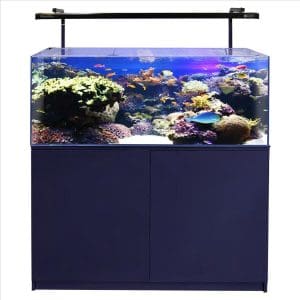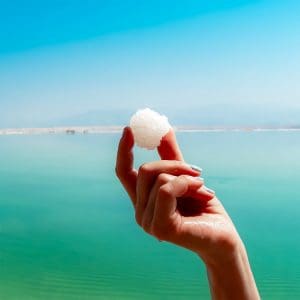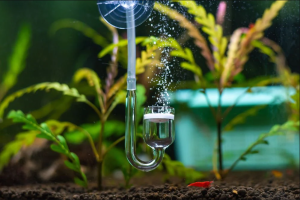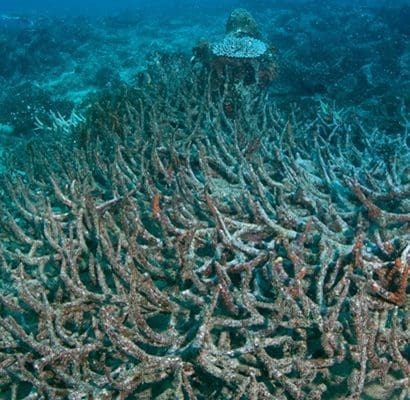
Imagine you have a big fish tank at home, filled with beautiful corals and colorful fish. Now, think about how the ocean is like a giant fish tank for the entire planet. It’s not just where we find Nemo and Dory – it’s where countless marine creatures live. But something is happening to our ocean, something called “ocean acidification.” This big word might sound complicated, but we’re here to break it down for you.
In this activity guide, we’re going to do something cool. We’re going to make our mini ocean at home (don’t worry, it’s not too big) to learn about this important issue. Along the way, we’ll discover how it affects sea life and what we can do to help protect our oceans.
Contents
What is Ocean Acidification?🐟
If you’re curious about oceans and want to know more about “ocean acidification,” you’re in the right place. This is a big word that describes something really important happening in our oceans. We’ll break it down for you, step by step, so you’ll understand it just like a pro!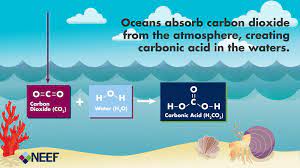
Why Oceans Are So Awesome
First, let’s talk about why oceans are so incredible. They cover more than two-thirds of our planet, making them the world’s biggest fish tank. Oceans are home to amazing creatures like colorful fish, playful dolphins, and the mysterious giant squids.
The Secret Behind Ocean Water
Oceans are filled with water, and this water is a little bit special. It’s not just plain water; it’s like a magical potion. It has something called “salt” in it, which gives it a unique taste. This saltwater is perfect for the creatures living in the ocean.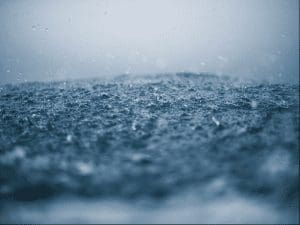
The Carbon Dioxide Connection
Now, here’s where things get interesting. People, like us, do something that’s not so great for the ocean. When we drive cars, use energy, and even breathe, we create something called “carbon dioxide” or CO2. It’s like the exhaust from our activities. This CO2 goes up into the air, and guess what? Some of it ends up in the ocean, too!
Making Water a Little Sour
When CO2 goes into the ocean, it doesn’t just sit there. It starts to mix with the ocean water, and that’s when the magic happens. You know, when you mix lemon juice into water, it becomes a bit sour? That’s what’s happening – the ocean water becomes a bit sour, too.
This is where the “ocean acidification” part comes in. It’s like the ocean is getting a little sour because of all the extra CO2. And when we say “acid,” we’re not talking about the stuff you see in science labs. It’s just a way to say the water is changing and becoming less friendly for some sea creatures.
The Impact on Sea Life
Now, you might wonder, “So what if the water becomes a little sour?” Well, this change isn’t good news for our underwater friends. Some animals, like clams and corals, need a special material to make their homes. It’s like building with LEGO blocks. But when the water is sour, it’s like trying to build with blocks that are slowly melting. Not cool, right?
Fish and other sea creatures can also get sick when the water is too sour. It’s like trying to breathe in a room with smelly air. They don’t like it, and neither should we.
What Can We Do About It?
So, that’s the deal with ocean acidification. Now that you understand what it is and why it’s a problem, you might be wondering, “What can we do to help?” We’ll explore some cool activities and ideas to make our mini oceans at home and learn more about this important topic in the “Ocean Acidification Activity” section.
Getting Ready for the Ocean Acidification Activity🐟
Now that we’re all excited to dive into the world of ocean acidification, it’s time to get prepared. Don’t worry; we’ve got everything you need to make this activity a breeze.
What You’ll Need
Let’s start with the list of things you’ll need. It’s like getting your gear ready before going fishing. Here’s what you should have on your checklist:
Materials Checklist:
- A clear glass or plastic container (like a big jar or fish tank)
- Water (you can use tap water)
- Table salt
- Baking soda (yep, the same stuff you use for baking)
- A stirring stick (a spoon works great)
- A pH testing kit (you can find these in science stores or online)
- Sea creatures figurines or toys (like little fish or seashells)
- A notebook and pen
Got everything? Great! Now, let’s get ready to create your mini ocean and explore ocean acidification.
Step-by-Step Instructions
Okay, so we’ve got the stuff; now let’s make some ocean magic happen. It’s a bit like following a recipe, but instead of cookies, we’ll be creating a mini ocean.
Step 1: Setting Up Your Mini Ocean
- Take your clear glass or plastic container. This will be your ocean. Make sure it’s clean and clear, just like a real ocean.
- Fill your container with water, just like the sea. You don’t need to fill it all the way; leave some space at the top. We want to make it look like a real ocean, not a flood!

Step 2: Salty Seas
- Now, we’re going to make our ocean water salty, just like the real ocean. Add a small spoonful of table salt to your water.
- Stir the water gently with your stirring stick (or spoon) until the salt dissolves. This is like stirring your drink to mix in the sugar.

Step 3: Testing the pH
- This step is where the pH testing kit comes in. It’s like a magic wand to measure how sour or sweet your ocean is. Dip one of the kit’s test strips into your ocean water.
- Wait a few moments and check the color of the strip. Your kit will have a chart to tell you what the color means. The colors will help you understand if your ocean is starting to get sour because of the carbon dioxide, just like in real ocean acidification.
Step 4: Adding a Touch of CO2
- Now, for the exciting part! We’re going to add a tiny bit of carbon dioxide (CO2) to your mini ocean. To do this, you can use baking soda. It’s like adding a pinch of magic dust.
- Carefully sprinkle a bit of baking soda into your ocean. It’s like giving your ocean a little fizz.

Let’s Dive In: Conducting the Activity🐟
Now comes the fun part – we get to watch our mini ocean in action! In this section, we’ll guide you through the steps of conducting the “Ocean Acidification Activity.” Don’t worry; it’s as easy as a day at the beach.
Detailed Activity Guide
Think of this as your treasure map for discovering how ocean acidification works. Follow these steps to see what happens to your mini ocean:
Step 1: Observation Time
Before we add more magic, take a good look at your mini ocean. Notice the color and the way it sparkles – it should be clear, just like the real ocean.
Step 2: The CO2 Effect
Now, remember that baking soda we added earlier? It’s like a secret ingredient. Watch closely as you add a tiny bit more of it to your ocean. What do you see? It might start to fizz or bubble, just like a science experiment.
Step 3: Wait and Watch
This is the part where patience comes in handy. Just like how you wait for your favorite show to start, give your mini ocean some time – about 30 minutes or more. During this waiting time, make some predictions. What do you think will happen to your ocean? Will it become more sour or stay the same?
Step 4: The pH Test
Remember that magic wand, the pH testing kit? Take another test strip and dip it into your ocean. Check the color on the strip and compare it to your chart. Is it the same as before, or has it changed?
Step 5: Record the Results
Grab your notebook and pen (or use your tablet if you’re feeling tech-savvy). Write down what you observe. You can draw pictures, write descriptions, or even take photos of your mini ocean to document the changes.
The “Aha!” Moment
As time passes, you’ll start to see something interesting. Your mini ocean might be getting a bit sour, just like the real oceans affected by ocean acidification. It’s like watching a tiny science experiment unfold right in front of your eyes.
Tips for Success
- Keep your mini ocean in a place with some light but not too much direct sunlight.
- Remember to keep the water clean and free from any extra stuff that might mess up the experiment.
- Feel free to involve your family or friends in this cool activity. The more, the merrier!
Exploring the Results: What Does It All Mean?🐟
Great job on conducting your “Ocean Acidification Activity”! Now, it’s time to unravel the mystery of what’s been happening in your mini ocean and how it connects to the real deal in our big oceans.
Understanding Your Mini Ocean
Remember those observations you made earlier and the pH test you did? Now, it’s time to look at your notes and see what’s changed. You might notice that:
- The water might have become a bit cloudy or less sparkly.
- The pH test might show a different color, indicating a change in the ocean’s “mood.”
These are signs that your mini ocean is getting a bit sour, just like how real oceans are affected by ocean acidification. It’s like your mini ocean is giving you a sneak peek into what’s happening in the underwater world.
What Does It Mean for Real Oceans?
Now, let’s connect the dots between your mini ocean and the vast, real oceans. You see, when we release a lot of carbon dioxide (CO2) into the air, it goes into the ocean, just like we added a bit more baking soda to your mini ocean. This extra CO2 makes the water in the real oceans become a little sour, just like in your experiment.
So, your mini ocean is like a mini version of what’s happening out there in the deep blue sea. The more sour the ocean gets, the harder it is for creatures like corals, clams, and tiny plankton to build their homes. It’s like trying to build sandcastles with sand that keeps melting away. Not fun, right?
Why It Matters
Understanding ocean acidification is important because it helps us see how our actions, like using too much energy or driving cars that release CO2, can affect the ocean and all the creatures living in it. It’s like being a superhero for the sea and helping protect our underwater friends.

